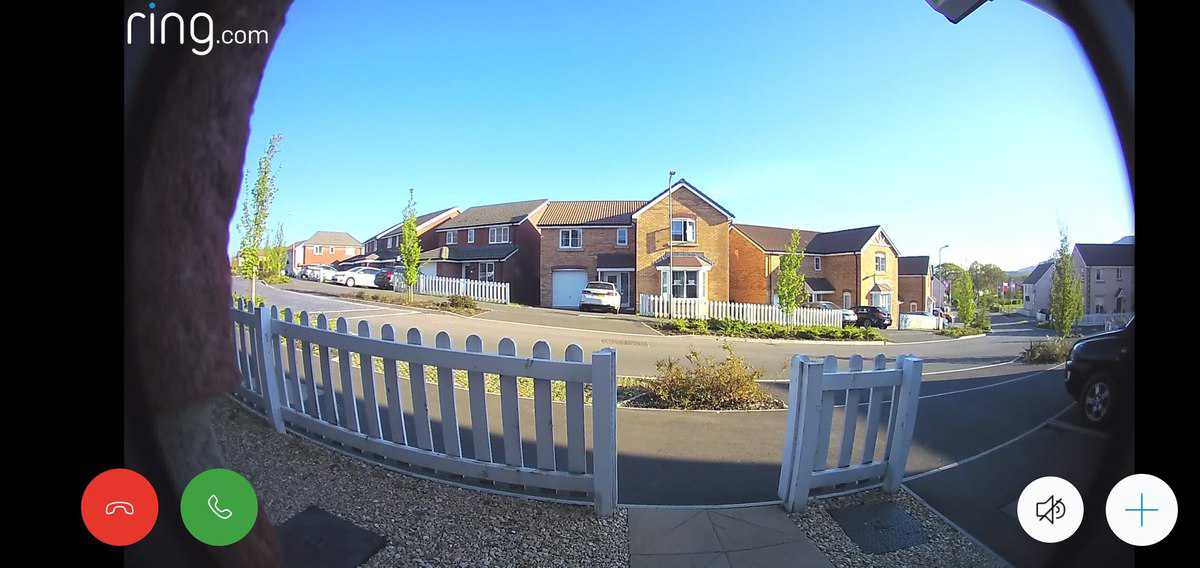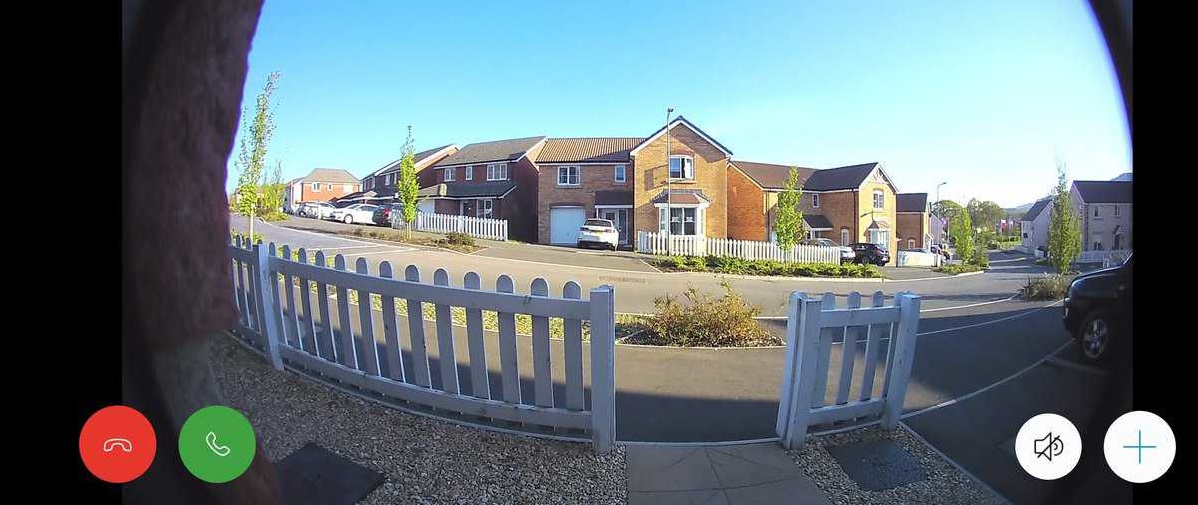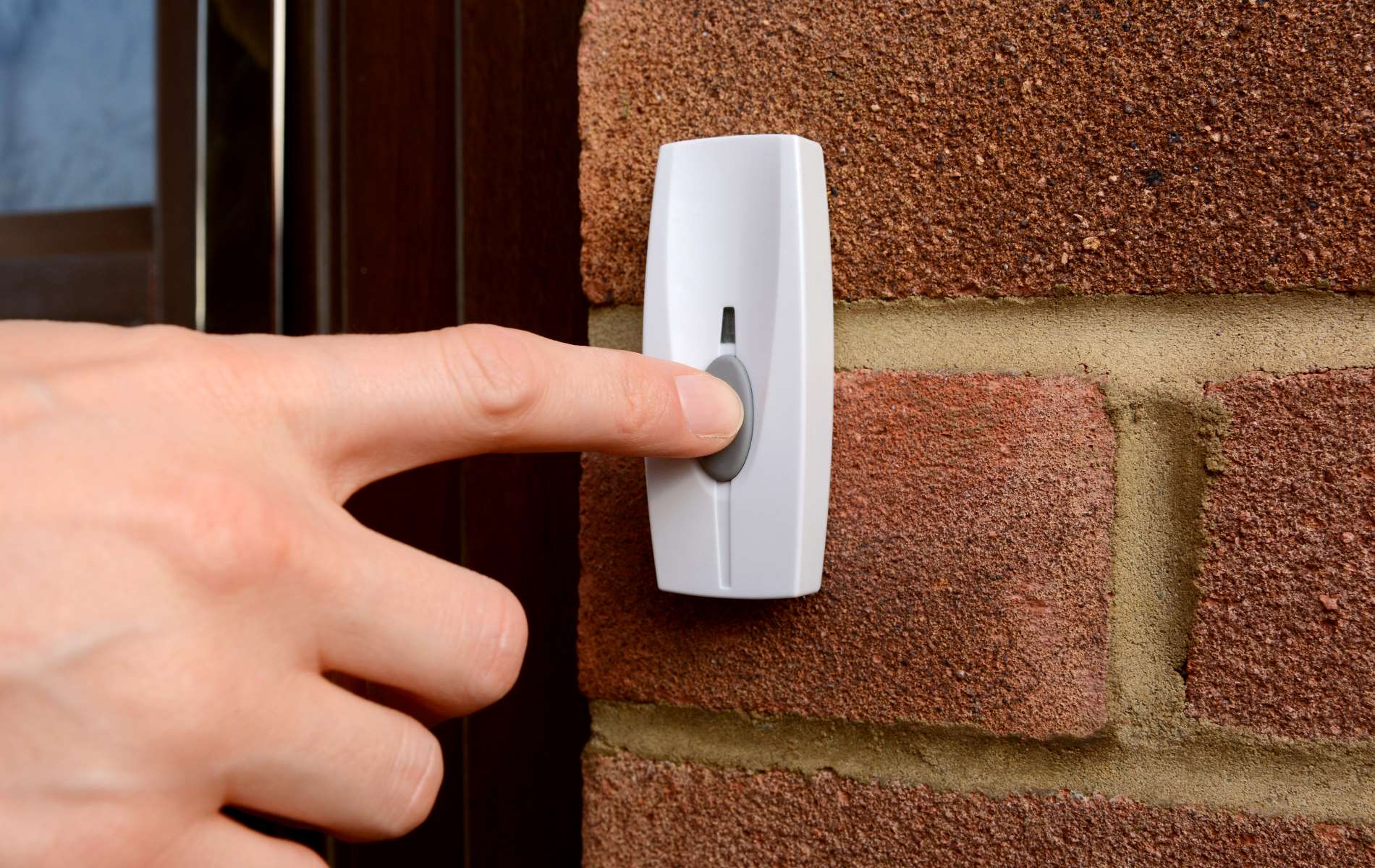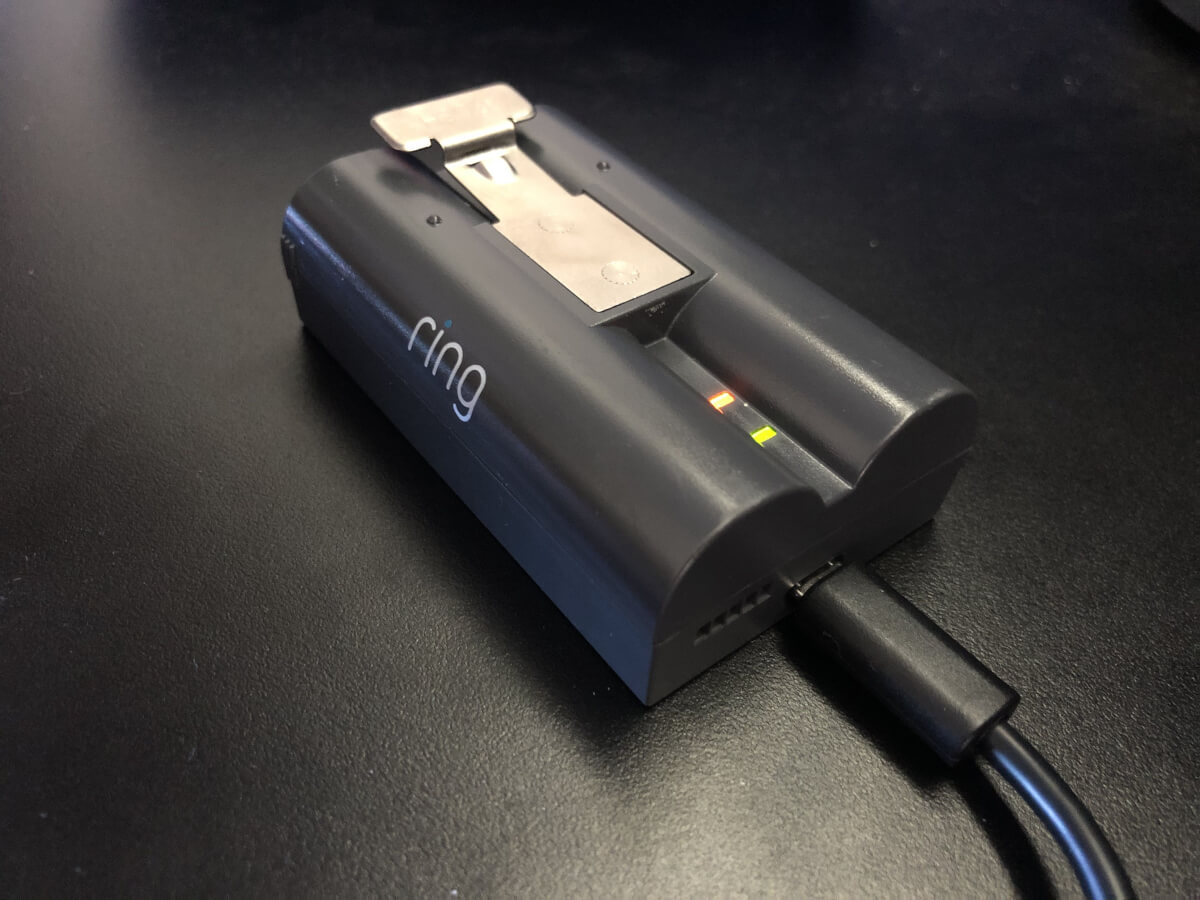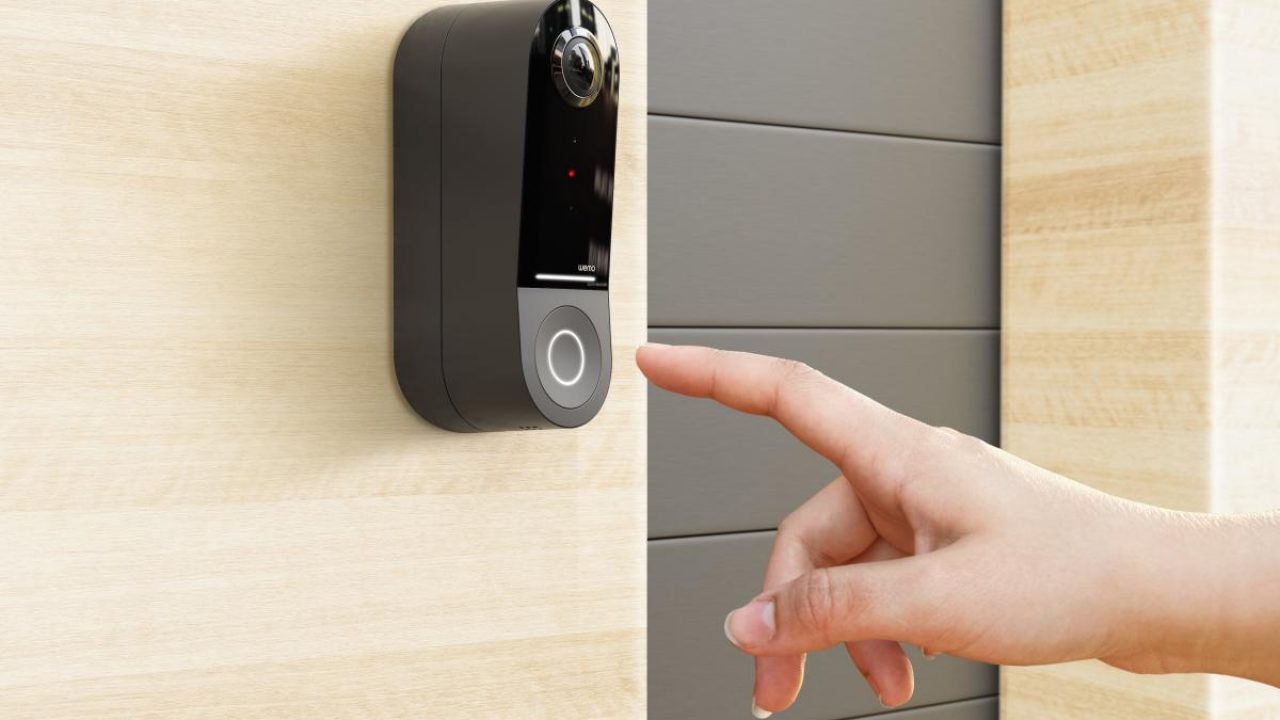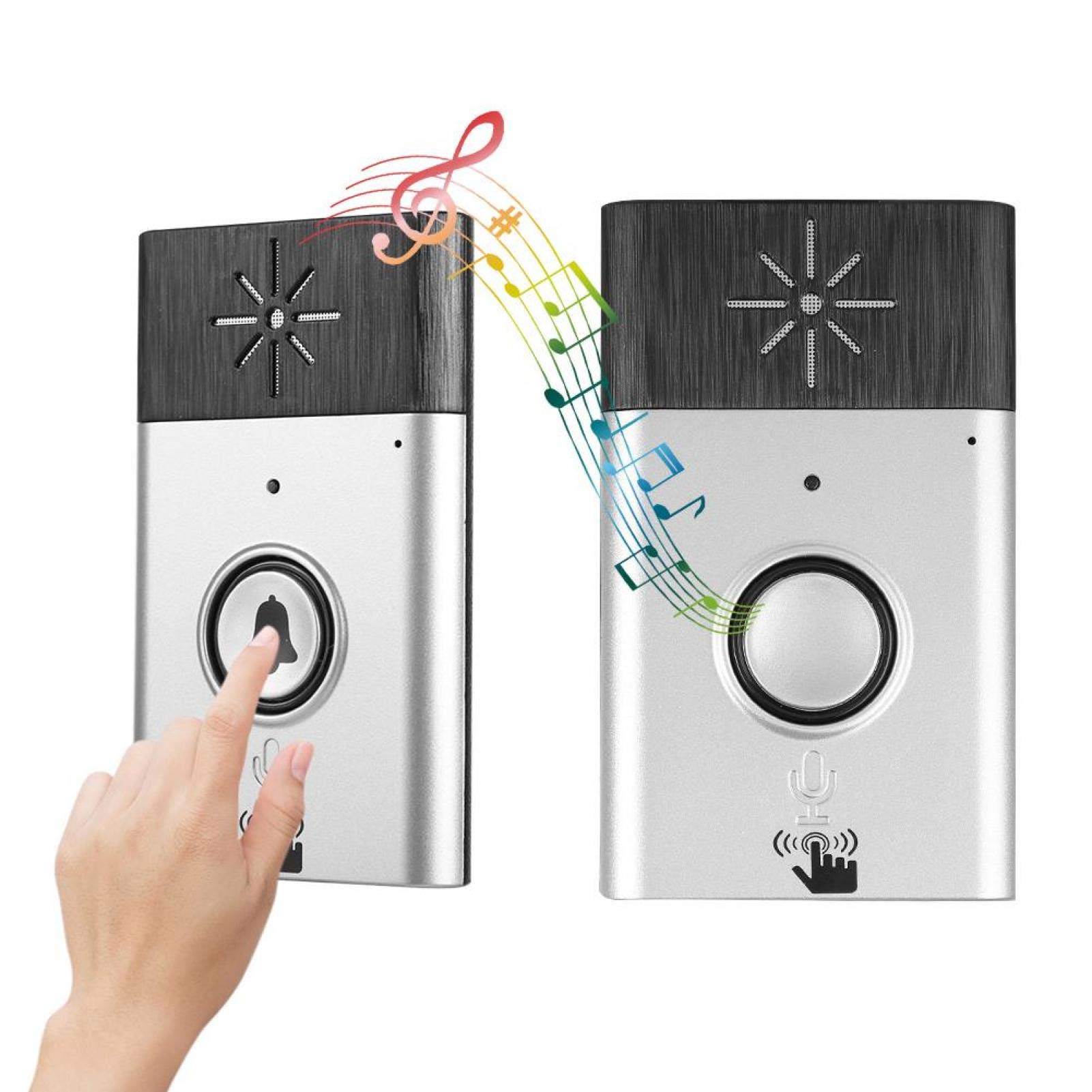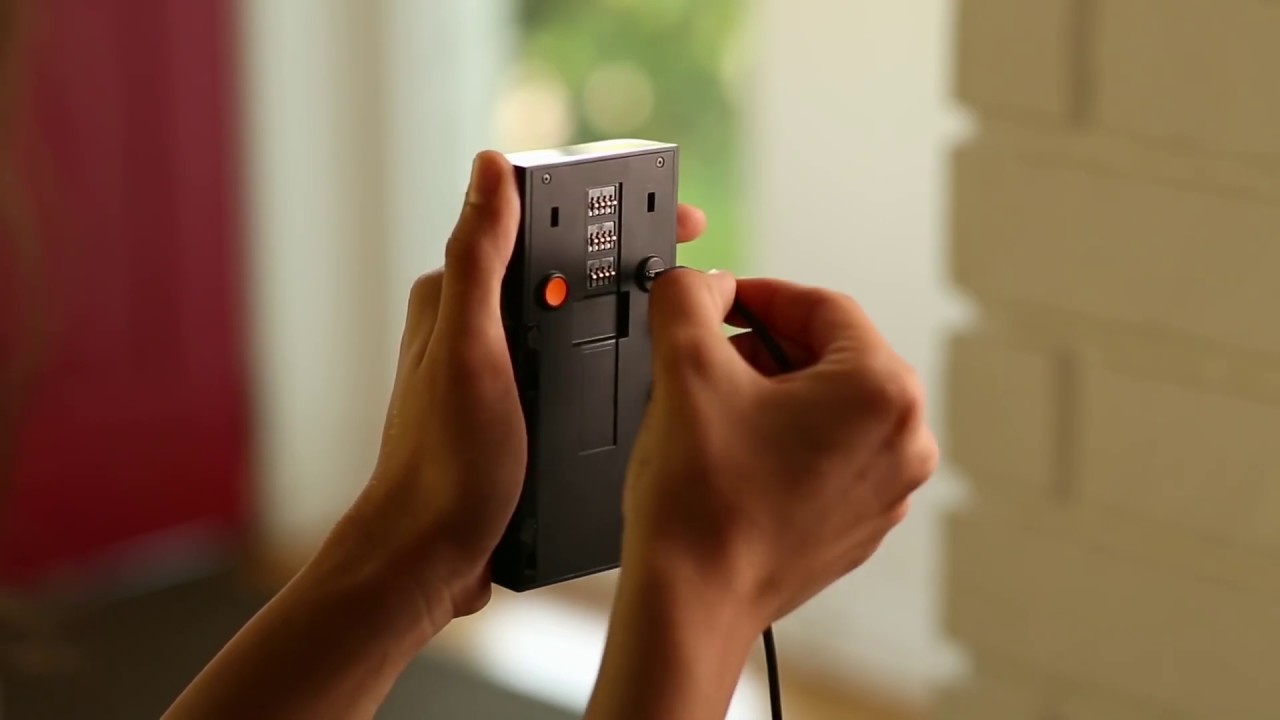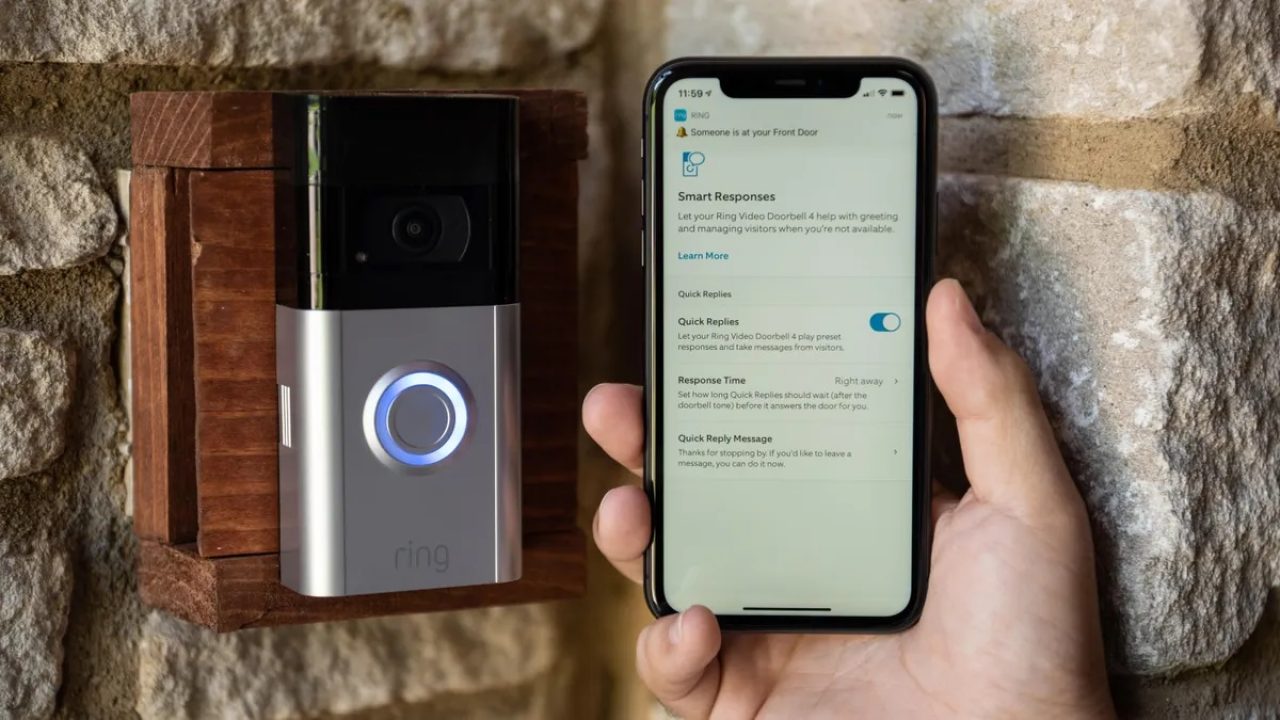Introduction
Video doorbells have become increasingly popular in recent years, providing homeowners with an added layer of security and convenience. These devices not only allow you to see who is at your front door but also enable two-way audio communication, allowing you to interact with visitors without physically opening the door. However, one common question that arises is: how far can a video doorbell see and hear?
To answer this question, it is essential to understand the basic functioning of video doorbells and the factors that can affect their range. Factors such as camera angle, video resolution, placement, environmental factors, microphone sensitivity, and the capability to zoom and enhance details all play a role in determining how far a video doorbell can effectively see and hear.
By understanding these factors, homeowners can make informed decisions when it comes to choosing the right video doorbell for their needs, ensuring optimal performance and security for their property.
In this article, we will delve into the basics of video doorbells and explore the factors that influence their range. We will also discuss the implications of camera angle, video resolution, placement, and microphone sensitivity on the distance at which a video doorbell can effectively operate.
By the end of this article, you will have a better understanding of how far a video doorbell can see and hear, empowering you to make the best choice for your home’s security needs.
The Basics of Video Doorbells
Before exploring the range of video doorbells, it’s important to have a basic understanding of how these devices work. A video doorbell typically consists of a camera, microphone, speaker, and motion sensor, all housed within a sleek and compact unit that is installed near your front door.
When someone approaches your door, the motion sensor detects their presence and activates the camera to start recording. The camera captures a live video feed of the area in front of your door, allowing you to see who is there in real-time. Simultaneously, the microphone picks up the audio, enabling two-way communication between you and the visitor via the built-in speaker.
Video doorbells are typically connected to your home’s Wi-Fi network, allowing you to access the live video feed and interact with visitors from your smartphone or tablet. This wireless connection is crucial to the functionality and convenience of video doorbells, as it enables remote monitoring and communication even when you’re away from home.
Many video doorbells also offer additional features such as cloud storage for recorded video footage, night vision capabilities for clear visibility in low-light conditions, and integration with smart home devices for enhanced automation and security.
Now that we have a basic understanding of how video doorbells work, let’s delve into the various factors that can affect the range at which they can effectively see and hear.
Factors That Affect the Range of Video Doorbells
Several factors can influence the range at which a video doorbell can effectively see and hear. Understanding these factors can help you determine the best placement and configuration for optimal performance:
- Camera Angle and Field of View: The camera angle and field of view determine the area that the video doorbell can capture. A wider field of view allows for greater coverage, ensuring that you can see more of your surroundings. It’s important to choose a video doorbell with a wide-angle lens and an adjustable camera angle to maximize the area it can monitor.
- Resolution and Clarity of the Video Feed: The resolution of the camera and the clarity of the video feed play a crucial role in determining how far you can effectively see. Higher resolution cameras offer more detailed images, allowing you to see finer details even from a distance. Look for video doorbells with at least 1080p resolution for optimal clarity.
- Placement and Environment: The placement of the video doorbell and the environmental conditions can affect its range. Obstructions like walls, trees, and other objects can interfere with the signal and reduce the effective range. It’s important to carefully consider the placement of the video doorbell to ensure an unobstructed view and optimal signal strength.
- Capability to Zoom and Enhance Details: Some video doorbells offer the capability to zoom in and enhance details in the recorded footage. This feature can be useful in situations where you need to focus on specific areas or objects that are further away.
- Sensitivity and Range of the Microphone: The sensitivity of the microphone and its range determine how well the video doorbell can pick up audio. A higher sensitivity microphone can capture sounds from a greater distance, enabling clearer two-way communication.
By considering these factors when choosing and installing a video doorbell, you can ensure that it operates effectively within the desired range, providing you with the security and convenience you desire.
The Camera Angle and Field of View
The camera angle and field of view of a video doorbell play a crucial role in determining how far it can effectively see and monitor your surroundings. The field of view refers to the area that the camera can capture, typically measured in degrees. A wider field of view allows for greater coverage, ensuring that you can see more of what’s happening outside your door.
When choosing a video doorbell, it’s important to consider the camera’s field of view. Look for doorbells with a wide-angle lens that provides a broader coverage area. Typically, a field of view around 160 to 180 degrees is considered wide-angle and can capture a significant portion of the front area of your home.
With a wide field of view, you will be able to see people approaching your front door from a distance, giving you more time to prepare or assess the situation. It also allows you to keep an eye on any potential package deliveries or suspicious activities in your surroundings.
Another factor to consider is the camera angle. The angle at which the camera is installed determines the perspective from which it captures the video feed. Ideally, the camera should be positioned in a way that provides a clear and unobstructed view of the area in front of your door.
Adjusting the camera angle can be beneficial in ensuring optimal coverage. Depending on your specific needs, you may need to tilt the camera slightly upwards or downwards to capture the desired area effectively. Some video doorbells even offer the flexibility to adjust the camera angle remotely, allowing you to fine-tune the view even after installation.
When installing the video doorbell, make sure there are no obstructions that could hinder the camera’s field of view. Trees, shrubs, or other objects in close proximity to the camera could block its view and limit the range. It’s important to clear any such obstructions and ensure a clear line of sight for optimal monitoring.
By considering the camera angle and field of view when choosing and installing a video doorbell, you can maximize its range and ensure that you have a clear view of the area around your front door.
The Resolution and Clarity of the Video Feed
The resolution and clarity of the video feed provided by a video doorbell are essential factors in determining how far you can effectively see and monitor your front door. The resolution refers to the number of pixels displayed in the video, indicating the level of detail and sharpness. The higher the resolution, the clearer the image will be, even when zoomed in or viewed from a distance.
When choosing a video doorbell, look for one with a minimum resolution of 1080p. This resolution ensures that you can see finer details, such as facial features or license plate numbers, even at a reasonable distance. Higher resolutions, such as 2K or 4K, provide even more clarity but may come at a higher price point.
In addition to resolution, consider the overall clarity of the video feed. This includes factors such as image quality, color accuracy, and contrast. A video doorbell with superior image processing capabilities will produce crisp and vibrant visuals, allowing you to have a clear view of anyone approaching your front door.
It’s important to note that while higher resolutions result in clearer images, they can also require more bandwidth and storage. Make sure your internet connection can handle streaming high-resolution video, and consider the storage options available in the video doorbell, such as cloud storage or local storage via an SD card, to store the recorded footage.
Another aspect of video clarity to consider is the night vision capabilities of the video doorbell. Many video doorbells come equipped with infrared (IR) LEDs that allow for clear visibility in low-light or nighttime conditions. The range and quality of night vision can vary between models, so it’s worth checking the specifications to ensure it meets your requirements.
By choosing a video doorbell with a high resolution and superior clarity, you can effectively monitor and identify people or objects at a greater distance, enhancing the security and surveillance of your front door.
The Placement and Environment of the Video Doorbell
The placement and environment of a video doorbell can significantly impact its range and effectiveness. Proper placement ensures an unobstructed view and optimal signal strength, allowing you to monitor your front door from a distance with clarity and accuracy.
When choosing the placement for your video doorbell, consider the following factors:
- Height and Angle: Ideally, the video doorbell should be installed at a height that provides a clear view of the entire front area. The angle should be adjusted to capture the desired field of view without any obstructions. Aim for a straight-on view of the approaching path and ensure that the camera is not tilted too far upwards or downwards, as this can limit its effective range.
- Obstructions: Take note of any potential obstructions that may hinder the view of the video doorbell. Trees, bushes, or even objects like porch decorations can obstruct the camera’s field of view, reducing its effectiveness. Clearing these obstructions or adjusting the camera angle to avoid them can help improve the range and visibility of the video feed.
- Distance from the Wi-Fi Router: The video doorbell relies on a stable Wi-Fi connection to transmit the live video feed to your smartphone or tablet. To ensure a strong and uninterrupted signal, consider the distance between the video doorbell and your Wi-Fi router. If the signal strength is weak, you may experience lag or poor video quality. If necessary, consider using Wi-Fi range extenders or mesh networking systems to boost the signal in that area.
- Weatherproofing: Video doorbells are designed to withstand various weather conditions, but it’s still essential to choose a model with proper weatherproofing. Ensure the video doorbell has an IP rating (Ingress Protection rating) of at least IPX4 or higher to withstand rain, snow, and extreme temperatures. This will ensure that it continues to function reliably in any weather.
Being mindful of the placement and environment of your video doorbell will help optimize its range and performance. By ensuring an unobstructed view, a strong Wi-Fi signal, and appropriate weatherproofing, you can effectively monitor your front door from a distance with confidence.
The Capability to Zoom and Enhance Details
The capability to zoom in and enhance details is a valuable feature offered by some video doorbell models. This feature allows you to focus on specific areas or objects in the video feed, even if they are further away from the camera. It can be particularly useful in situations where you want to get a closer look or when you need to identify specific details.
Video doorbells with zoom functionality typically offer either digital zoom or optical zoom. Digital zoom enlarges the image digitally, but it may result in a loss of quality and pixelation as you zoom in further. Optical zoom, on the other hand, utilizes physical lenses to adjust the focal length and provide a true magnification without sacrificing image quality.
By using the zoom feature, you can focus on specific details, such as the face of a visitor or the license plate of a vehicle, allowing for better identification or documentation of events. This feature is especially advantageous if you live in a neighborhood with potential security concerns or if you frequently receive deliveries and want to ensure accurate documentation.
In addition to zoom, some video doorbells offer additional features to enhance details. For example, certain models may provide image enhancement capabilities to improve clarity and contrast, making it easier to see subtle details in the video feed.
It’s important to note that the effectiveness of the zoom feature can vary depending on the camera’s resolution. Higher-resolution cameras will provide better detail even when zoomed in, allowing you to see finer details more clearly. Therefore, when selecting a video doorbell with zoom functionality, it’s recommended to choose one with a higher resolution for the best results.
By having the capability to zoom and enhance details, you can extend the effective range of your video doorbell, allowing you to closely examine or capture important details that may be further away from the camera.
The Sensitivity and Range of the Microphone
The sensitivity and range of the microphone in a video doorbell are crucial factors that determine how far it can effectively pick up audio. The microphone allows for two-way communication between you and the visitor at your front door, enhancing the convenience and functionality of the device.
A microphone with higher sensitivity can capture clearer audio from a greater distance. This allows you to have a conversation with someone at your front door even if you’re not in close proximity. Look for a video doorbell with a microphone that has adjustable sensitivity settings, so you can customize it to your specific needs and environment.
While the microphone’s sensitivity plays a significant role, the range is equally important. The microphone’s range determines how far it can effectively pick up sound and transmit it to your audio device. Depending on the design and specifications of the video doorbell, the microphone’s range can vary.
Factors such as the environment, ambient noise, and any potential obstructions can impact the microphone’s range. It’s important to choose a video doorbell that can effectively capture audio even in challenging conditions. Look for models that have noise-canceling capabilities to minimize background noise and ensure clear communication.
Additionally, consider the placement of the video doorbell in relation to the microphone’s range. If the microphone’s range is limited, it’s essential to ensure the video doorbell is installed in a location that allows for close proximity to the most frequently accessed areas outside your front door. This ensures that conversations or greetings can be easily heard and understood.
The sensitivity and range of the microphone are crucial for effective communication and interaction through the video doorbell. A device with a high-quality microphone that can capture audio from a distance will provide clear and seamless communication, regardless of the distance between you and the visitor at your front door.
How Far Can Video Doorbells See and Hear?
The range at which video doorbells can effectively see and hear can vary based on several factors we have discussed. While it’s difficult to provide an exact distance, it’s safe to say that most video doorbells can provide a clear view and audible communication within a range of 10 to 30 feet.
Factors such as camera angle, field of view, resolution, clarity of the video feed, microphone sensitivity, and range all contribute to the effective distance at which a video doorbell can operate.
Video doorbells with a wide-angle lens and a field of view of around 160 to 180 degrees can capture a larger area, enabling you to see people approaching from a greater distance.
Higher-resolution cameras, such as those that offer 1080p or higher, provide clearer images with finer details, even when viewing from a distance. This allows for better identification and monitoring of your front door area.
The sensitivity of the microphone, along with its range, determines how well the video doorbell can pick up and transmit audio. Microphones with higher sensitivity and a sufficient range will allow for clear two-way communication, even when you are not in close proximity to the device.
It’s important to consider environmental factors and potential obstructions that may affect the range of the video doorbell. Walls, trees, and other objects can impact the signal and reduce the effective range.
To maximize the range and effectiveness of a video doorbell, proper placement is essential. Ensuring an unobstructed view, a strong Wi-Fi connection, and proper weatherproofing are crucial for optimal performance.
In summary, the range at which a video doorbell can see and hear varies based on factors such as camera angle, resolution, microphone sensitivity, and environmental conditions. By considering these factors and selecting a video doorbell that meets your specific needs, you can ensure optimal performance and security for your home.
Conclusion
Video doorbells have revolutionized home security, providing homeowners with the ability to see and communicate with visitors at their front door, even when they are away from home. Understanding the factors that affect the range at which video doorbells can see and hear is crucial in maximizing their effectiveness.
From the camera angle and field of view to the resolution and clarity of the video feed, each aspect contributes to the range and visibility of a video doorbell. Choosing a wide-angle lens, higher resolution, and image enhancement capabilities can greatly improve the clarity and level of detail captured by the camera.
The placement and environment of the video doorbell play a significant role in its range. Ensuring an unobstructed view, a strong Wi-Fi signal, and appropriate weatherproofing are essential for optimal performance.
The sensitivity and range of the microphone are also important factors to consider. A microphone with higher sensitivity and a sufficient range allows for clear and effective two-way communication with visitors, even from a distance.
While it is difficult to provide an exact distance, most video doorbells can effectively see and hear within a range of 10 to 30 feet. However, it’s important to remember that the range can be influenced by various factors, including environmental conditions and potential obstructions.
By considering these factors and choosing a video doorbell that meets your specific needs, you can ensure that you have a reliable and effective home security solution. Whether you want to keep an eye on package deliveries, monitor your surroundings, or enhance the security of your home, a video doorbell can provide the peace of mind and convenience you need.
Investing in a quality video doorbell with the right features and understanding its capabilities will enable you to see and hear what’s happening at your front door, giving you greater control and peace of mind over the security of your home.







